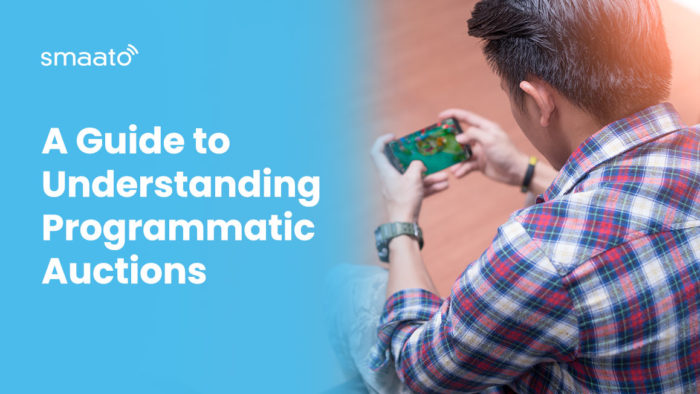A Guide to Understanding Programmatic Auctions
Learn the four programmatic deal types, their different merits, and how to select the right deal for your next campaign.

There are several different ways of acquiring inventory in the real-time bidding (RTB) ecosystem. The four main types of auctions include a preferred deal, private marketplace, open auction, and programmatic guaranteed. Each of these programmatic auction types offer their own unique benefits, so this guide will explain the differences between each type and help you choose the best one for your programmatic advertising strategy or in-app monetization plan.

A type of programmatic auction where publishers sell premium inventory at a fixed eCPM price to a selected number of advertisers, while entirely bypassing auctions. Advertisers are bidding in real time, either at or above the fixed eCPM price. Once an advertiser bids on an impression inside a preferred deal, they lose the right to bid again on that same impression in the open auction.
An invitation-only type of programmatic auction where a deal is traditionally made directly between a publisher and a selected group of advertisers, demand side platforms (DSP), ad networks, and/or agencies. Publishers have the freedom to set the minimum eCPM, like in the preferred deal scenario, and the highest bid wins.


Open auction is the official name for real-time bidding, and all publishers and advertisers are eligable to participate at the same time. Publishers offer their inventory at a specific minimum price, while advertisers bid for the available inventory. The highest bid wins. This is the most traditional form of programmatic auctions.
A guaranteed buy, also known as “programmatic direct” or “programmatic guaranteed,” is the direct sale of reserved ad inventory between a buyer and seller, with automation replacing the manual insertion order (IO) process. This type of auction allows the publisher to regulate the price of inventory to buyers. It also gives buyers the ability to transparently buy more premium inventory on a direct basis from the publisher.

| Preferred Deal | Private Marketplace |
|---|---|
|
|
| Open Auction | Programmatic Guaranteed |
|
|
| Type of Auction |
Programmatic | Non-programmatic (Direct campaigns) |
||
| Real-time bidding (RTB) | Programmatic Guaranteed, Guaranteed Buy, or Programmatic Direct |
|||
| Open Auction | Private Marketplace (PMP/Deal ID) |
|||
| How is the price determined? |
Auction | Auction and/or PMP terms |
Pre-defined | Pre-defined |
| Do advertisers and publisher have a direct relationship? |
No | Yes | Yes, to some extent | Yes |
| Inventory volume? |
Non-guaranteed | Non-guaranteed | Guaranteed | Guaranteed |
| Type of inventory? |
Percentage and type of inventory that the publisher decides to put on a public auction |
Premium-only inventory |
Percentage of premium Bulk inventory with robust |
All, including premium Bulk inventory with |
| Delivery type? |
DSP/Through RTB pipes |
DSP/Through RTB pipes with a Deal ID set |
Programmatic direct platform integrated with the publisher’s ad server |
Email/phone, manual ad tags entered in the publisher’s ad server |
Programmatic guaranteed, PMPs, and preferred deals all ensure a higher level of brand safety for publishers and advertisers compared to open auctions. Advertisers know precisely in which type of environment their ads will appear, while publishers can be confident that their inventory won’t be flooded with low-quality ads. This also helps to prevent programmatic fraud. Furthermore, eCPMs are much more competitive in programmatic guaranteed, private marketplace, and preferred deals, compared to open auctions because premium advertisers are competing for the highest quality ad inventory.
In RTB, private marketplace, programmatic guaranteed, and preferred deals get the priority to bid on the impressions over an open auction. Participants in these auction types bid on an exclusive inventory that is out of reach for open-auction participants.